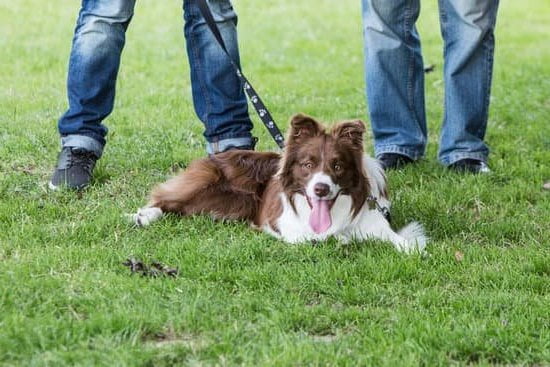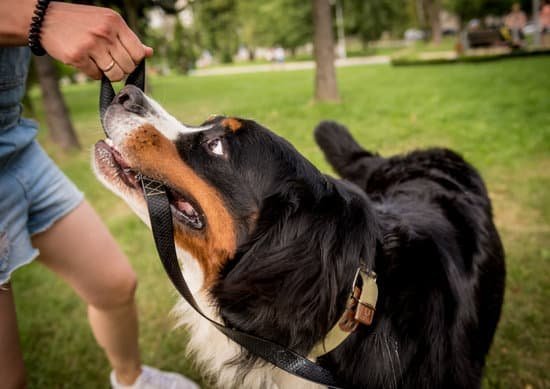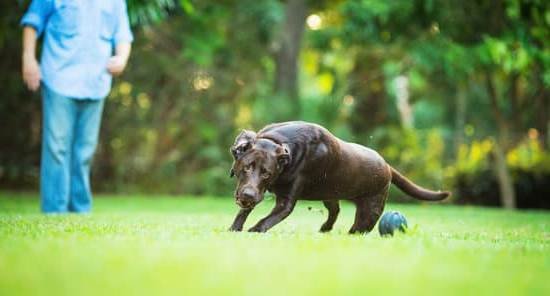Leash training a dog is an essential aspect of pet ownership, ensuring both the safety of the dog and the control of the owner. Training a dog to walk on a leash not only promotes good behavior while out for walks or in public spaces but also establishes a strong bond between the pet and its owner.
In this article, we will explore the numerous benefits of leash training, providing insight into why it is a crucial skill for every dog to master.
Understanding Your Dog’s Behavior is key to successful leash training. By exploring the reasons behind challenging behaviors such as pulling on the leash or resisting walking, owners can better address these issues and effectively train their dogs. Additionally, choosing the right leash and collar is vital in making sure that walking experiences are comfortable for both the dog and its owner.
In upcoming sections, we will provide valuable guidance on basic leash training techniques, troubleshooting common issues that may arise during training, as well as helpful tips on using positive reinforcement and reward-based training methods to encourage good leash manners in dogs. Stay tuned for expert advice on how to navigate this important aspect of pet ownership with consistency and patience.
Understanding Your Dog’s Behavior
When it comes to leash training a dog, understanding your pet’s behavior is essential. Dogs may pull on the leash, resist walking, or exhibit other challenging behaviors for a variety of reasons. One common reason for pulling on the leash is simply that the dog is excited and eager to explore its surroundings. Similarly, resistance to walking may stem from fear, anxiety, or discomfort with the leash and collar.
It’s important for dog owners to recognize that these behaviors are natural responses for dogs and can be addressed through proper training and positive reinforcement. By understanding the underlying reasons for these behaviors, owners can tailor their training approach to effectively address and correct them.
In addition to excitement and fear, some dogs may also exhibit challenging behaviors while on a leash due to lack of proper socialization or previous negative experiences. It’s crucial for owners to consider their dog’s individual history and temperament when implementing leash training techniques. Taking a patient and empathetic approach can help address any underlying issues that may be contributing to challenging behaviors during walks.
| Common Reasons for Challenging Behaviors | Training Approach |
|---|---|
| Excitement and eagerness | Positive reinforcement, encouraging calm behavior |
| Fear, anxiety, or discomfort | Gentle desensitization, building confidence |
| Lack of socialization or past negative experiences | Patient and empathetic approach, gradual exposure to new environments |
Choosing the Right Leash and Collar
When it comes to leash training a dog, choosing the right leash and collar is crucial for the comfort and safety of both the dog and the owner. There are various options available in the market, including harnesses, retractable leashes, and traditional collars, each with its unique features and benefits. It is essential for owners to consider their dog’s size, behavior, and specific needs before selecting the most suitable leash and collar for them.
Here is a breakdown of the different types of leashes and collars available:
- Traditional Collar: This type of collar is the most common option and consists of a simple strip of material that fastens around the dog’s neck. It is ideal for well-behaved dogs that do not pull or lunge during walks.
- Harness: A harness fits around a dog’s chest and shoulders, distributing pressure evenly when they pull on the leash. This option is ideal for small breeds or dogs with respiratory issues.
- Retractable Leash: A retractable leash allows dogs more freedom to roam while still being controlled by their owner. However, this type of leash may not be suitable for training as it can encourage pulling behavior.
To choose the right leash and collar for their dog, owners should consider factors such as their pet’s size, age, breed characteristics, and any existing behavioral issues. For example, a harness may be more suitable for small breeds or those prone to breathing problems while larger breeds may require a sturdy traditional collar to maintain control during walks.
Overall, understanding the needs of their dog is essential when selecting a leash and collar for training purposes. By choosing an appropriate option based on their pet’s individual requirements, owners can ensure a comfortable and successful experience when leash training their dog.
Basic Leash Training Techniques
Leash training a dog is an essential skill that benefits both the dog and the owner. It allows for safe and controlled walks, prevents the dog from running off or getting into dangerous situations, and promotes good behavior. Introducing a dog to a leash, teaching them to walk on a loose leash, and discouraging pulling are all key components of effective leash training.
When introducing a dog to a leash for the first time, it’s important to do so in a calm and positive manner. Start by allowing the dog to sniff and investigate the leash before gently putting it on. Use treats and praise to create a positive association with the leash, and avoid any sudden movements that may startle the dog.
Once the dog is comfortable wearing the leash, begin practicing walking on a loose leash in a quiet and familiar environment. Use treats as rewards for walking without pulling, and stop or change direction if the dog starts to pull on the leash. Consistency is key when teaching loose leash walking, as it may take time for the dog to understand what is expected of them.
Discouraging pulling involves teaching the dog that pulling on the leash does not result in moving forward. When the dog pulls, stop walking and wait for them to relax before continuing. This method reinforces that pulling will not lead to their desired outcome of moving forward, while also preventing them from dragging their owner around.
| Leash Training Tips | Description |
|---|---|
| Positive Reinforcement | Use treats and praise as rewards for good behavior during leash training |
| Consistency | Stay consistent in your training methods to reinforce good habits |
| Patience | Be patient with your dog as they learn proper leash manners |
Troubleshooting Common Issues
Dealing With Leash Aggression
Leash aggression is a common problem for many dog owners, and it typically manifests as lunging, barking, or growling at other dogs or people while on a leash. One of the key factors in addressing leash aggression is understanding the underlying cause. Dogs may exhibit this behavior out of fear, frustration, or territoriality.
It’s essential to work with a professional dog trainer or behaviorist to develop a training plan tailored to your dog’s specific triggers and behaviors. In addition, using positive reinforcement techniques to redirect your dog’s attention and reward calm, non-aggressive behavior can be effective in overcoming leash aggression.
Helping Your Dog Overcome Fear of the Leash
Some dogs may develop a fear of the leash due to negative associations or experiences in their past. To help your dog overcome this fear, it’s important to desensitize them to the leash gradually. Start by simply placing the leash near your dog during positive interactions such as playtime or mealtime.
Then, gradually introduce short and relaxed leash-wearing sessions indoors before progressing to outdoor walks. Use treats and praise to create positive associations with wearing the leash, and be patient as you work through your dog’s fears.
Managing Distractions During Walks
It’s not uncommon for dogs to become easily distracted during walks, whether by other animals, people, vehicles, or environmental stimuli. To address this issue, start by practicing basic obedience commands like “sit” and “stay” in a controlled environment before working up to more distracting settings.
Gradually expose your dog to distractions during walks while using positive reinforcement techniques to encourage focus and good behavior. It’s important to set realistic expectations and be consistent with training efforts when managing distractions during walks.
By employing these strategies and remaining patient and consistent throughout the training process, dog owners can tackle common leash training issues effectively and help their pets develop into well-behaved walking companions-not only beneficial keyword:leash training a dog for both the owner but also for their furry friends.
Positive Reinforcement and Reward-Based Training
When it comes to leash training a dog, positive reinforcement is one of the most effective and humane methods for encouraging good behavior. Positive reinforcement involves rewarding your dog for displaying the desired behavior, such as walking nicely on a leash, with treats, praise, or other rewards. This approach not only helps to create a positive association with walking on a leash but also strengthens the bond between you and your furry companion.
One of the key components of positive reinforcement during leash training is using treats and rewards to reinforce good behavior. When your dog walks nicely on the leash without pulling or resisting, immediately reward them with a small treat and verbal praise. Over time, your dog will learn that walking politely on a leash results in a delicious reward, making them more likely to repeat this behavior in the future.
In addition to treats, verbal praise and affection are also powerful tools for reinforcing good leash manners in dogs. When your dog behaves well on a walk, such as responding to cues, staying by your side, or remaining calm around distractions, be sure to shower them with enthusiastic praise and physical affection. This positive feedback will further motivate your dog to continue exhibiting these desirable behaviors while on a leash.
It’s important to note that while using positive reinforcement can be highly effective for training purposes, it’s essential to ensure that treats and rewards are used in moderation and as part of an overall balanced training approach. Additionally, every dog is different, so it may take some trial and error to determine which rewards are most motivating for your individual pet during leash training.
Consistency and Patience
Leash training a dog can be a challenging process that requires time, effort, and a great deal of patience. Consistency in training is key to successfully teaching your dog good leash manners. It is important for owners to understand that while some dogs may pick up leash training quickly, others may require more time and repetition before they fully grasp proper walking behavior on a leash.
To effectively leash train your dog, it is crucial to be consistent with your methods and expectations. This means using the same commands, techniques, and standards each time you take your dog for a walk. Consistency helps reinforce the desired behavior and prevents confusion for the dog. For example, if you use the command “heel” to indicate that your dog should walk beside you without pulling on the leash, it’s important to always use this command consistently during walks.
Furthermore, consistency also applies to setting boundaries and expectations regarding what behaviors are acceptable while on the leash. For instance, if your dog starts pulling on the leash during a walk, it’s important to not allow this behavior by stopping in your tracks until the pulling stops. Consistently enforcing these boundaries will convey to your dog that pulling is not an acceptable behavior while on the leash.
In addition to consistency, patience is equally crucial when it comes to leash training a dog. It’s important for owners to remain patient throughout the training process as dogs may not immediately understand or comply with leash training techniques. Furthermore, every dog learns at their own pace and may require varying amounts of time to fully grasp proper leash manners.
Patience allows for gentle correction of bad habits and helps maintain a positive learning environment for the dog. With consistent training methods and patience, most dogs can eventually become well-behaved on a leash.
Gradually Increasing Difficulty
In conclusion, leash training a dog is an essential aspect of responsible pet ownership that benefits both the dog and the owner. By providing safety, control, and promoting good behavior, leash training allows for enjoyable and stress-free walks with your furry companion. Understanding your dog’s behavior and choosing the right leash and collar are crucial steps in setting the stage for successful leash training.
Once you have mastered the basic leash training techniques and troubleshooted common issues, it is important to gradually increase the difficulty of your dog’s training. Introducing distractions, such as other dogs or people, walking in different environments, and practicing off-leash manners are all ways to challenge your dog and further reinforce their leash training skills.
As you progress through these stages of leash training, it is important to remember to be patient and consistent with your efforts. Using positive reinforcement and reward-based training will encourage good leash manners in your dog, while patience and consistency will help build a strong foundation for successful future walks.
With dedication to the process, gradual increases in difficulty during training, and plenty of praise for accomplishments along the way, you can ensure that both you and your dog enjoy safe and pleasant walks together for years to come.
Frequently Asked Questions
What’s the Best Way to Leash Train a Dog?
The best way to leash train a dog is through positive reinforcement, consistency, and patience. Start by using treats to encourage walking beside you and gradually increase the distance and duration of walks.
How Do I Get My Dog to Stop Pulling on the Leash?
To get your dog to stop pulling on the leash, it’s essential to remain calm and avoid reinforcing the behavior by pulling back. Instead, try changing direction when they pull or stopping until they relax before resuming the walk.
How Do I Train My Dog to Walk on a Leash Without Pulling?
Training your dog to walk on a leash without pulling requires teaching them to focus on you and rewarding good behavior. Use verbal cues and treats to encourage walking beside you and consistently reinforce this behavior during walks.

Welcome to the blog! I am a professional dog trainer and have been working with dogs for many years. In this blog, I will be discussing various topics related to dog training, including tips, tricks, and advice. I hope you find this information helpful and informative. Thanks for reading!





